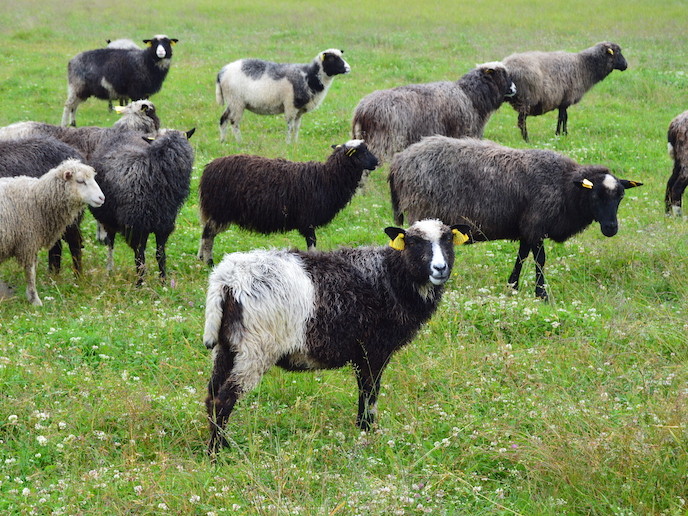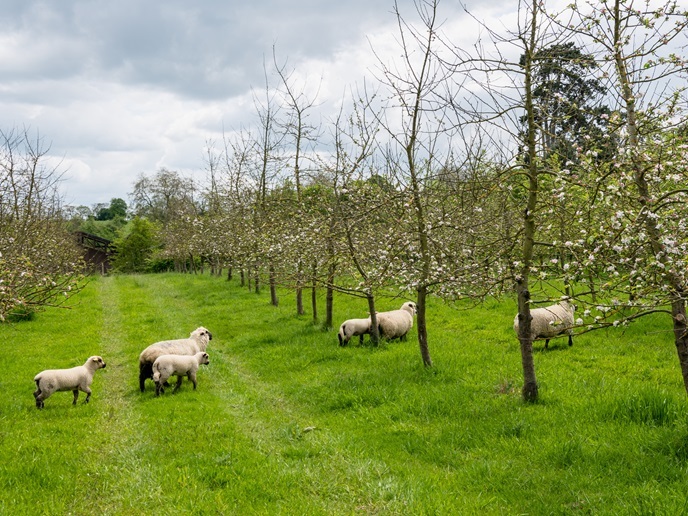Diving into the genetics of Estonia’s ancient sheep
Sheep are one of the most important and widely distributed domestic species in the world, with a shared history alongside humans of around 11 000 years. They have had, and will continue to have, a huge influence on the global economy and culture. Large-scale breeding, starting around the 18th to 19th century, led to fragmented populations and reduced the genetic variability. Yet, peripheral populations like the northern Europe native breeds preserved their distinctness and are now considered important reservoirs for genetic diversity. They are resistant to diseases, climate and – importantly – parasites. They have good mothering instincts and are also prolific breeders. “All these qualities are increasingly being valued in modern sheep husbandry, where long-term sustainable strategies are sought,” explains Dr Eve Rannamäe, formerly affiliated with the University of York(opens in new window), United Kingdom and OVinE project leader. According to archaeological and historical evidence, sheep in Estonia – the main study region for the EU project OVinE – have been used for wool and meat since at least the Late Bronze Age (starting from 800 BCE). Yet, due to extensive crossbreeding during the 20th century, the aboriginal sheep almost went extinct. Nevertheless, the aboriginal sheep have survived in the current Kihnu(opens in new window) native breed, contributing to the important diversity preserved in north-eastern Europe. OVinE was launched to investigate the genetics of these native sheep compared to other European breeds alive today, and ancient populations of the past. This research was undertaken with the support of the Marie Skłodowska-Curie programme. Tools of the trade To investigate the history and development of sheep, Dr Rannamäe turned to two main methods: Zooarchaeology(opens in new window) and ancient genomics(opens in new window). The zooarchaeological method involved morphometrics: studying skeletal measurements, which included collecting morphometric data from osteological collections of modern and archaeological sheep in Estonia, Finland, Lithuania, Poland, the United Kingdom and Portugal. In ancient genomics, the training involved the analysis and interpretation of whole genome data developed using next-generation-sequencing of 90 sheep samples from Estonia, Latvia, Lithuania, Poland, Russia and Greece. Well preserved samples were used to reconstruct complete mitochondrial genomes and examine nuclear DNA genetic markers, which display strong geographic affinity and patterns of past migrations. Studies published before the OVinE project have shown that maternal lineages in Estonian sheep (observed through mitochondrial DNA) have persisted over the last 3 000 years – and have been preserved even in the current native population. “This is really interesting when we think of the different cultural contacts, changes in power structures and development of trading networks over those millennia,” explains Dr Rannamäe. Beyond-ovine applications “The scientific results will have a direct impact on conserving and promoting the native breed – that is, conserving their genetic diversity and ecological efficiency and protecting their heritage,” says Dr Rannamäe. The scientific knowledge gathered during the project can be applied to other species in the future, like cattle or goat. The results of this project are still being drawn up, analysed and interpreted, but will be published in peer-reviewed articles soon. “My personal interest and desire to contribute to the preservation of the national heritage breed have been much influenced by my family’s recent involvement in sheep raising,” Dr Rannamäe adds. “This project has given me the opportunity to get to know these animals better and made me realise that, in research, personal experience and true interest in getting to know your study object are very important.”







